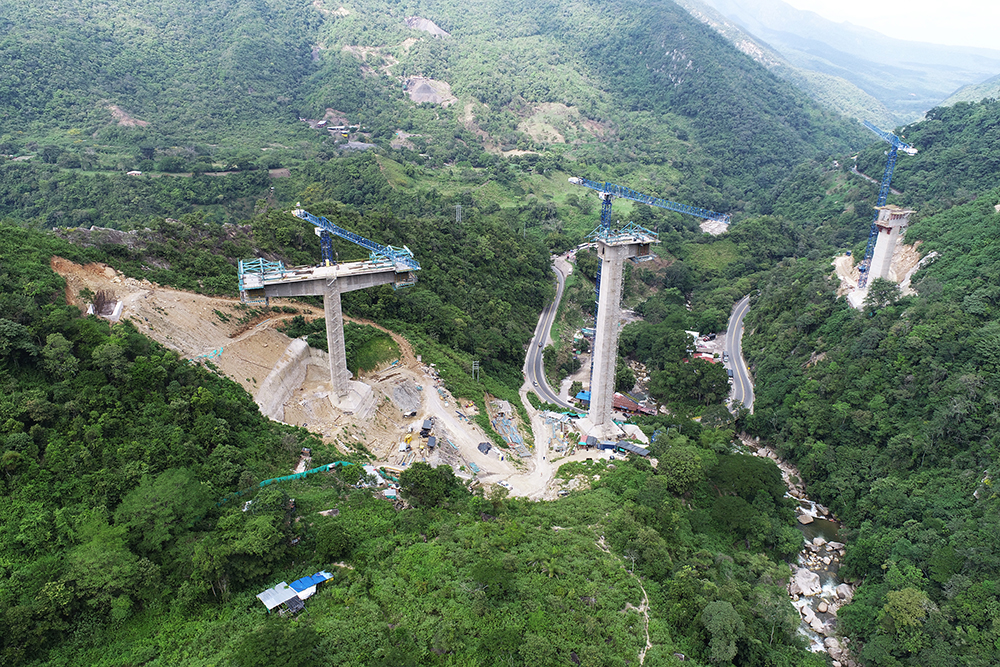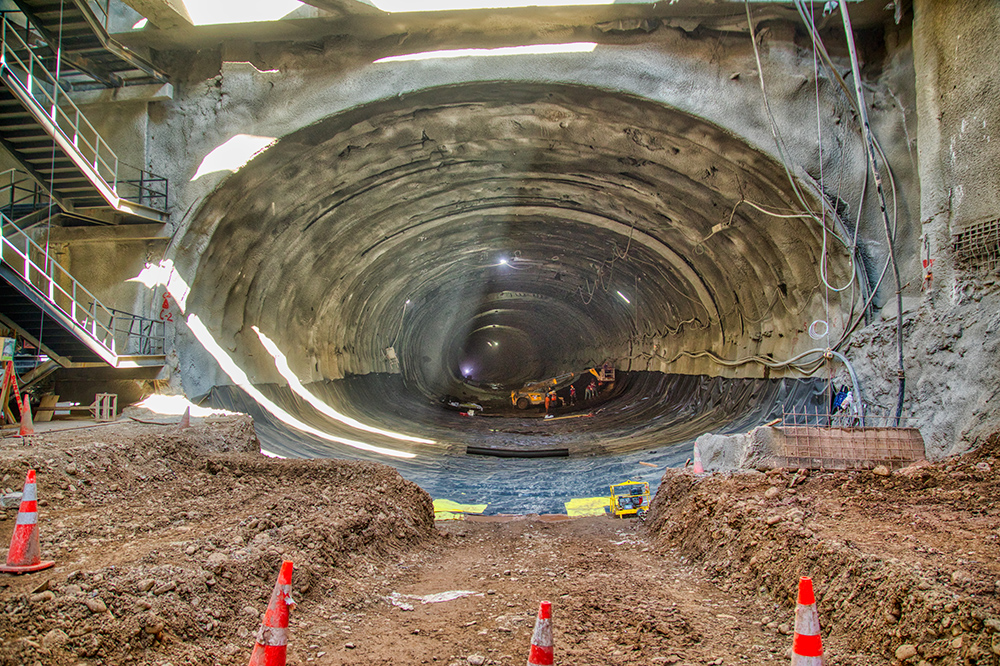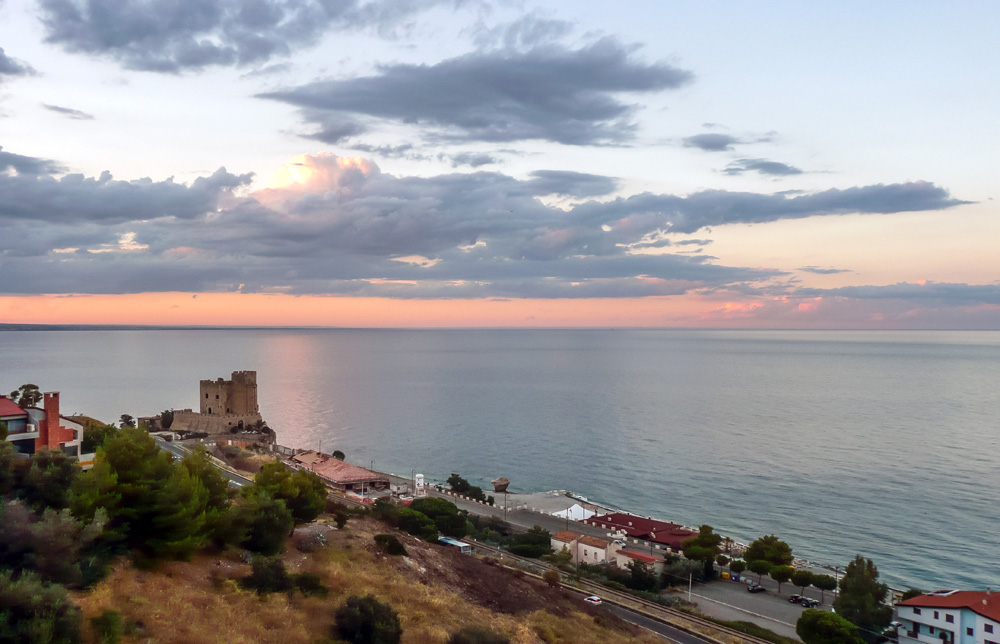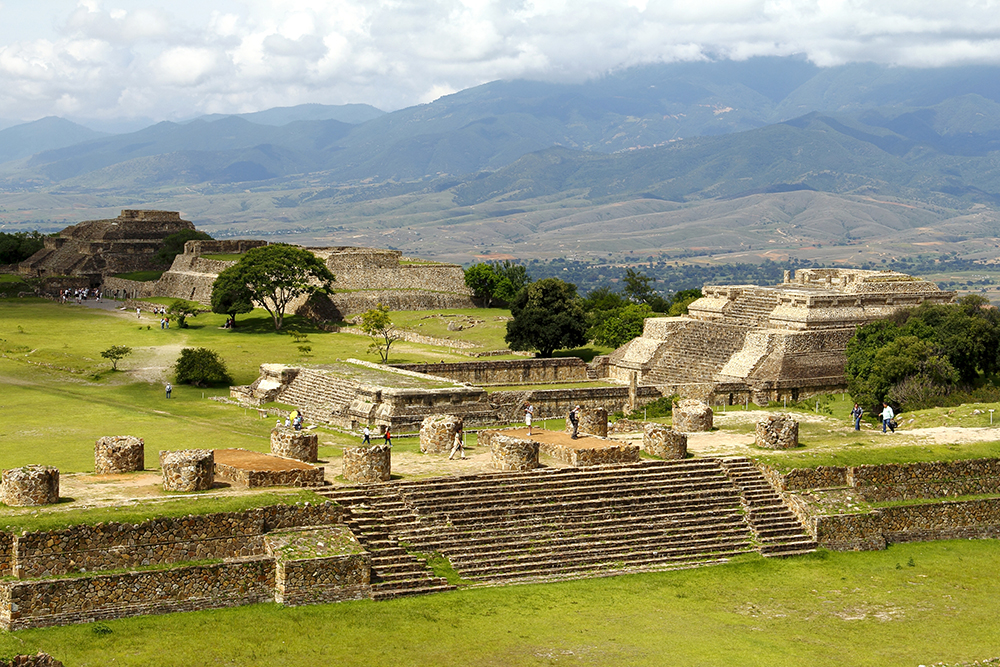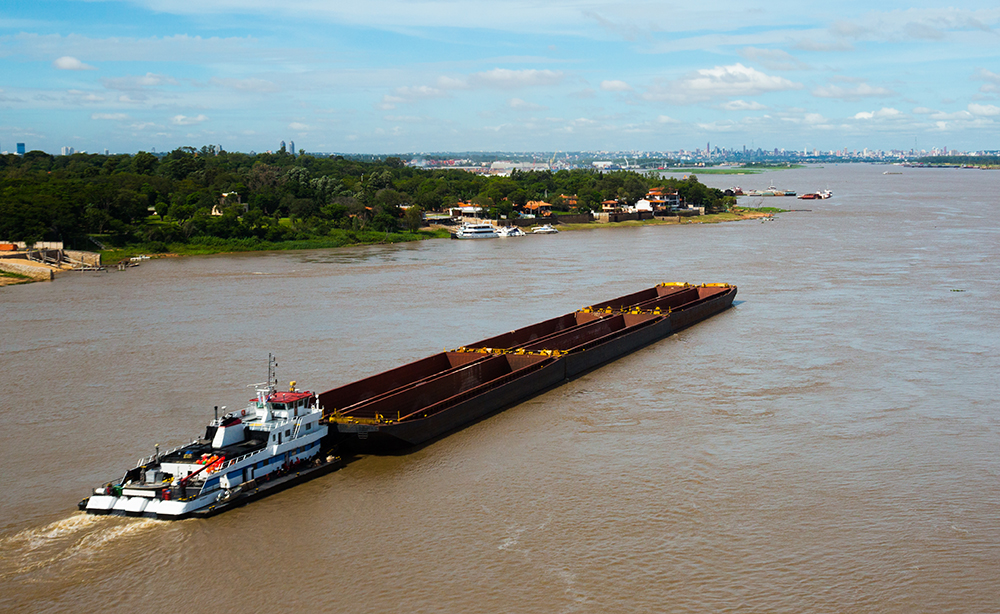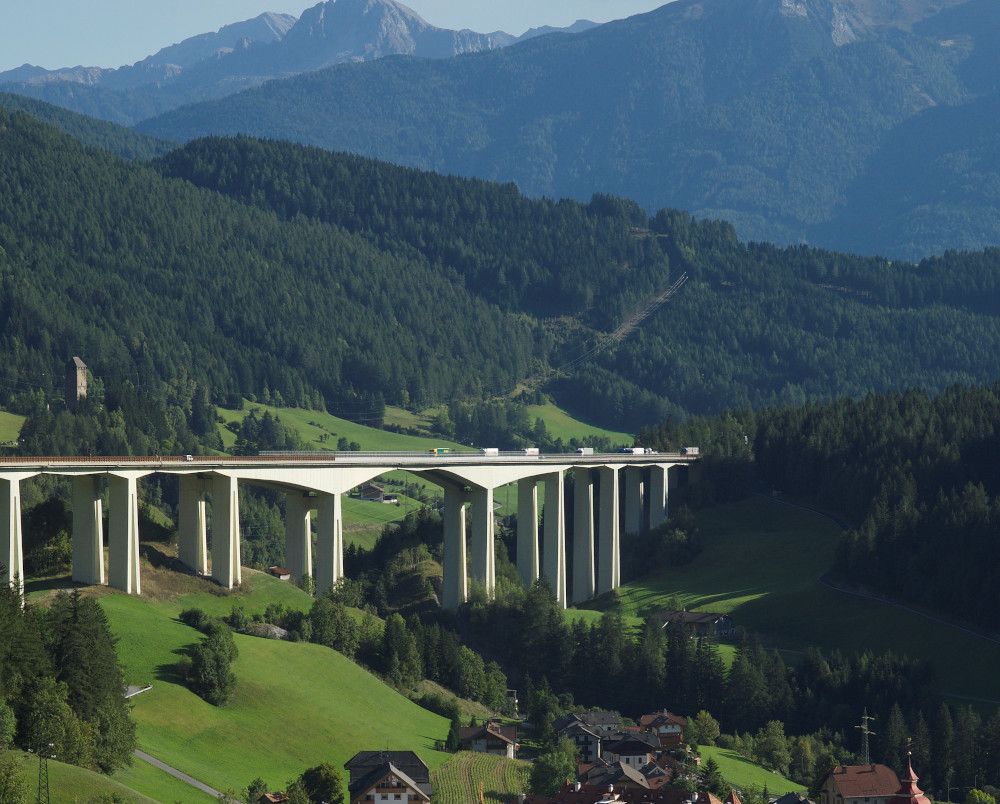
Fifty years after its opening, the A22 Autostrada del Brennero that joins the Brenner Pass with Modena in Northern Italy remains a major European road route. It carries a heavy volume of traffic and plays an important role in freight transport. Added to that, it is a model of good management and technological innovation.
Since historic times, the route connecting Italy with Austria and Germany through the Brenner Pass has represented one of the most important corridors on the European continent economically and geopolitically. From the 15th century, the Brenner Pass surpassed in importance the other Alpine passes from Italy to the countries of Northern Europe thanks to its position and accessibility. And at only 1,370m above sea level it is easily crossed in winter months.
With the resumption in trade after World War II, the Brenner Pass consolidated its role as a road and rail connection. It was declared strategic at the 1949 Geneva Convention on Road Traffic and included among those of greatest importance on the Continent. The European route that incorporates the Brenner Pass, later designated as the E45, starts in Scandinavia and ends in south-eastern Sicily, crossing Germany and Austria and then continuing down the entire Italian peninsula for a total of 5,190km. Until the mid-1970s, the E45 crossed the Brenner Pass and entered Italy through state highway SS12, skirting Bolzano, then proceeding to Modena. From there, the route continued through the Tuscan-Emilian Apennines, at which point it connected to the major national roads leading to the South. But as far back as the mid-1950s, the section of the SS12 to Modena was viewed as inadequate. Several administrations of the territories it travelled through began to envision a new road infrastructure, with the first project dating to 1959, the same year Autostrada del Brennero was founded. The company, which still manages the A22, is made up of majority public stakeholders including local public entities stretching from Bolzano to Modena. In 1962 the project received the approval of ANAS (the Italian road administration that manages the national road network) for the section between Verona and Brennero. The year after, approval was given for the section between Verona and Modena, whereupon it entered the implementation phase. The first section, Bolzano to Trento, was opened in 1968, and by 1972 the only section to be completed was Bolzano to Chiusa, the most complex due to the local geological conditions. With a length of 314km and 30 one-direction tunnels totalling 12.6km, 147 overpasses, 144 bridges and viaducts (totalling 31.4km), the A22 Autostrada del Brennero continues to form an important part of the E45. It connects the A1 Milan-Naples at Modena with the A13 in Austria, which leads from the Brenner Pass to Innsbruck. With an average of over 44,000 vehicles/day (over 72 million in 2018), many travelling on international routes, the A22 is one of the most important and heavily used European road infrastructures despite its relatively short length. One example of the heavy traffic volumes the route handles was the recent all-time record on Saturday, June 22nd, 2019. During that 24-hour period, the northbound traffic alone totalled 43,325 cars exiting the toll plaza of Vipiteno, the last before crossing the border between Italy and Austria.
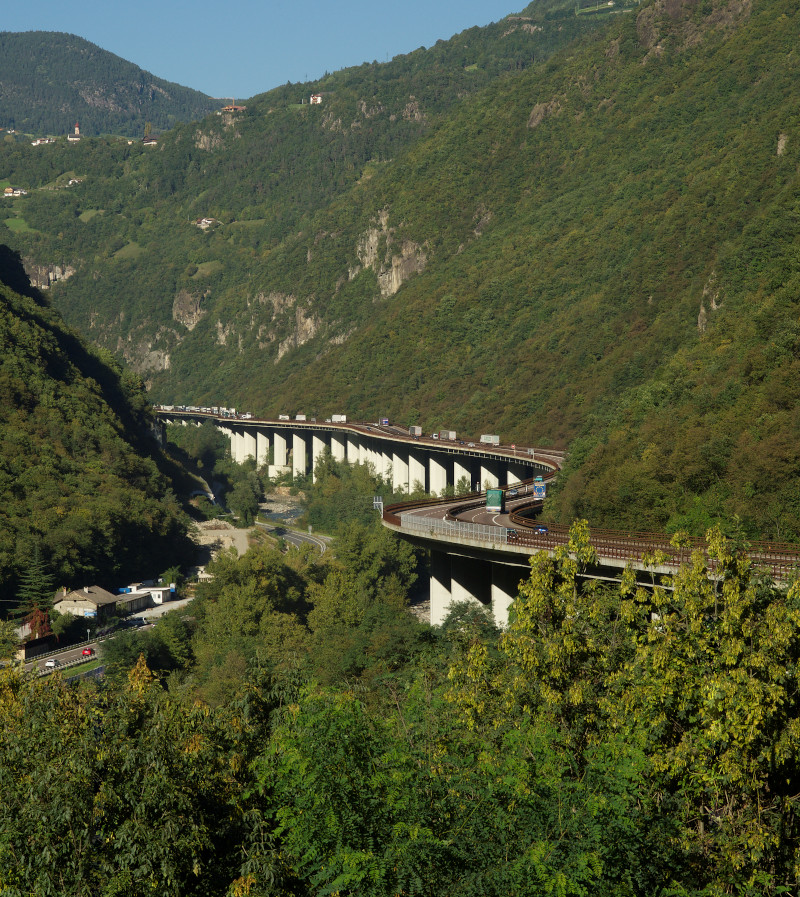
From the early phases encompassing route planning, solutions for motorway infrastructures and definition of the management model, the Autostrada del Brennero has set itself apart, becoming a reference for safety, quality of service and innovation. Today, with the exception of the Autostrada A3 Salerno-Reggio Calabria motorway, the A22 is the only Italian road infrastructure managed by a company with a majority of public stakeholders. Moreover, it has continued to improve service despite the exponential increase in traffic volumes since going into operation. This distinction stems not only from the vision of the original project, but especially from the solutions implemented for its maintenance and traffic management. The first and foremost result of this has been a significant decrease in crash rates (-62% fatalities and -13.65% total). The safety policy has also resulted in a gradual decrease in the overall crash rate, with 2018 the lowest ever (16.83%), and decidedly lower than the national average of 28% (the crash rate is calculated using the number of vehicles/year and length of the road). This objective was achieved despite an average increase in traffic which has seen truck traffic grow by 11.03% and light vehicles by 3.45% for a total of 5.57% over the last three years. The chief reason for this positive trend is the constant investment in routine and extraordinary maintenance (pavements, various infrastructures, safety barriers and tunnel lighting), as well as a development plan that has always employed advanced technologies for traffic control.
Technical management of maintenance is guided by the criterion of minimum expected life cycle which necessarily involves constant monitoring. Best exemplifying this approach is the procedure developed for the Colle Isarco viaduct, one of the longest of the entire Italian motorway network (1,030m and with a free span of 163m and a maximum height from the ground of 110m). Sensors have been installed on the viaduct to constantly monitor electrochemical and mechanical parameters (potential of corrosion, concentration of free chlorides, temperature and humidity, deformation and bending behaviour of the structure). In addition, measurement campaigns are regularly carried out for a stress analysis of the structure subjected to dynamic loads.
During the period 2008-2018, spending for maintenance of viaducts, overpasses, tunnels and mountainous slopes totalled €391 million and occupied an enormous amount of human and technical resources, especially considering the 314km length of the motorway. Among the first motorway to feature drainable asphalt to improve grip and visibility during heavy rainfall, the A22 uses cutting-edge materials to improve the duration of maintenance and repairs. Today, it is also the only Italian motorway to install crash barriers made of Corten steel; their brown colour blends with the surrounding landscape, and they feature high corrosion resistance that guarantees absorption of impacts over the long term.
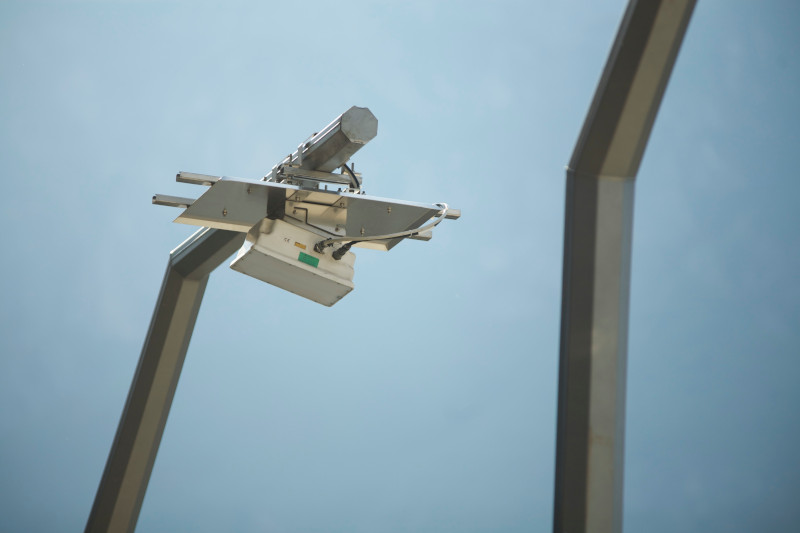
All tunnels on the A22, even those 500m or less in length, are fitted with technology for monitoring, control and remote control. Passive and active safety systems, such as porcelain enamel panels and high-reflective white paint for the linings, were tested and then adopted, later becoming standards of reference in Europe. A broad plan for additional improvements in tunnel safety is currently underway, including installation of new lighting systems to indicate escape routes and safety distances. Special focus has been placed on increasing visibility in critical points by installing LED lighting fixtures at the exits. As pointed out, the A22 is singled out for its technological equipment, a sector the company has solidly invested in for years: the motorway presently has 392 emergency call points with geolocation (11 in tunnels) where motorists can request assistance in the event of a breakdown, health emergency, or to call the fire service, 119 traffic control cameras, 67 cameras installed in tunnels for AID (automatic incident detection), 13 cameras on the A22 website displaying traffic conditions, 18 sensor stations for measuring travel times, 25 weather data stations with ice detection sensors, 29 stations for traffic monitoring, 23 fog system cabins with visibility sensors, 106km of LED guide lights and sensors to detect levels of fog, and 22 systems for preventing travel in the wrong direction in rest areas. The A22 is also one of the few European motorways where all rest areas (22 in total) are equipped with defibrillators to assist in case of cardiac arrest.
In the northbound direction after Verona the route enters the Adige Valley, a territory known for the beauty of its landscape and a strong agricultural tradition, famous for the cultivation of fruit and its vineyards. The motorway also borders several Alpine destinations popular in both winter and summer, while the Adige River flows parallel for much of the distance with all the problems this potentially entails. Since Autostrada del Brennero is made up of local entities of the provinces it travels through, it has always taken the territories of the motorway into great consideration when making project decisions. Relying on its solid rapport with these territories and their inhabitants, the company has also promoted and invested substantially in intermodal transport, helping to increase rail transport and reducing the truck traffic constantly moving along the European route.
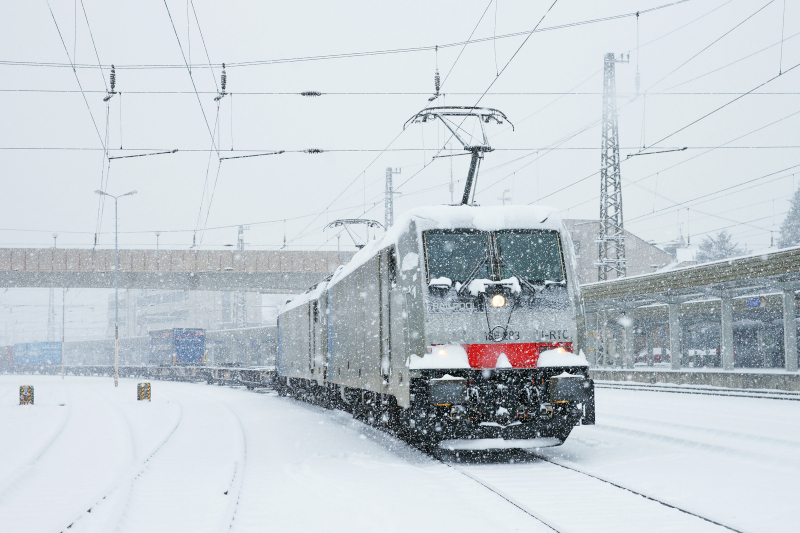
As a step further, Autostrada del Brennero contributed to the financing (to date €687.99 million) towards the modernisation of the rail line running through the Adige Valley and construction of the BBT (Brenner Base Tunnel), now in an advanced state of completion. At project end, the 55km BBT, joined with the 9km of tunnel crossing through the Inn Valley (a total of 64km), will be the longest rail tunnel in the world. It will offer a more linear and faster route of the corridor from Verona to Innsbruck and northward. Likewise, the company has also invested in the Trento Nord logistics hub and created a specific company, Brennero Trasporto Ferroviario, active in the traction of special rail wagons that transport semi-trailers to Austria, reducing the emissions produced on the motorway.
Again, in an effort to contain emissions, Autostrada del Brennero also coordinates the European project LIFE BrennerLEC whose purpose is to create a low-emission corridor. To this end, it is testing maximum speed management systems to gain improvements in the air quality in the Alpine section of the route. The A22 has also invested considerably in renewable energies: As of February 2019, there are 6 charging stations along the motorway, for a total of 44 chargers, either fitted with universal sockets or dedicated to Tesla vehicles. Charging is free for all motorway users. To further lower environmental impact, Autostrada del Brennero has nine fuelling points for refrigerator trucks so that drivers can turn off auxiliary engines during stops, leading on an annual basis to a significant drop in emissions. In 2009, the A22 introduced the first photovoltaic noise barrier in Italy; its average annual production over the last five-year period totalled 770.8kWh absorbed entirely by a municipality adjacent to the motorway. At the Bolzano exit, the Autostrada del Brennero, in collaboration with IIT (Institute for Technological Innovations) of Bolzano, built a pilot plant for the production, storage and distribution of hydrogen for motive power strategically located about halfway along the Munich-Modena corridor. The plant, which can provide fuel to up to 15 buses or 700 private vehicles and is the first of five to be installed along the whole route, is used to refuel the fleet of public vehicles of the Autonomous Province of Bolzano, potentially resulting in savings of around 525,000litres of petrol, or 440,000litres of diesel/year, and thus eliminating over 1.6 million kg of CO2 emissions annually.
The policies and directives of the European Union are under evaluation, and at times objects of criticism. However, projects for road infrastructure linkages promoted by the EU continue to have a high strategic value for commerce and the free movement of persons and goods. For this reason, the Autostrada del Brennero has partnered on several European projects that have positive impacts on safety, efficiency and the environment. Among them is C-ROADS – Italy which performs control and testing of V2X technologies to provide a standard of communication between vehicles and road infrastructure or other vehicles (to create platooning or the linking of trucks). Also to be noted is the A22’s participation in the URSA MAJOR 2 project to adopt intelligent transport systems (ITS) aimed at improving road traffic management on a European scale. It is also participating in the URSA MAJOR Neo project which intends to optimise traffic along the TEN-T corridor linking North Sea ports with those of the Mediterranean down to Sicily. The A22 is also involved in the Safestrip project (micro or nano sensors in the pavement that dialogue with vehicles and send data on pavement characteristics). Another project it is involved with is ICT4CART, for the transfer to an ICT infrastructure to allow transition to automation of road transport via the hybrid approach to communications in urban areas and on motorways. And the A22 is also participating in 5G-CARMEN, a futuristic project designed to better meet requirements in the speed of data exchanged and response times of the network infrastructure. 5G-CARMEN will allow the circulation of connected, cooperative and automated vehicles of the next generation.
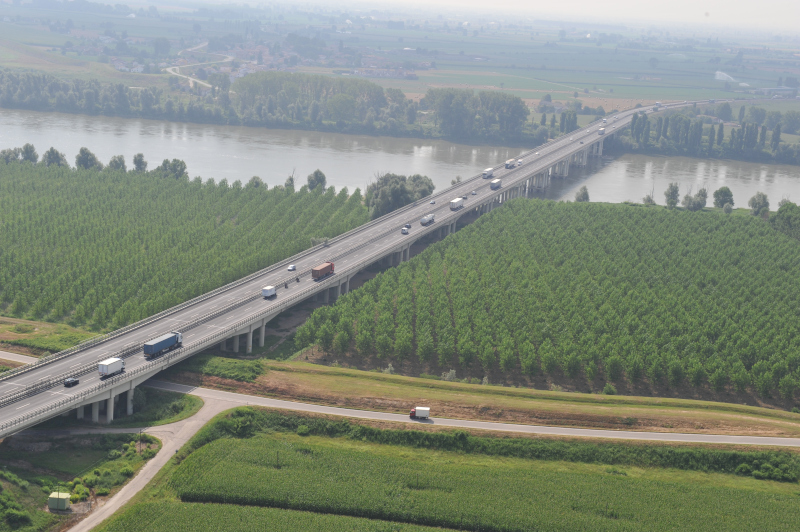
Like all major road infrastructures, the Autostrada del Brennero and its operator are faced with challenges to adapt to the new demands of mobility, both private and commercial. The construction of the third lane of the Po Valley section between Verona and Modena and the adoption of advanced technologies in their testing phase are undeniably among these. What remains a fact is that with its history and geographic position, the A22 will continue to play a decisive role in the Italian and European infrastructure network.




